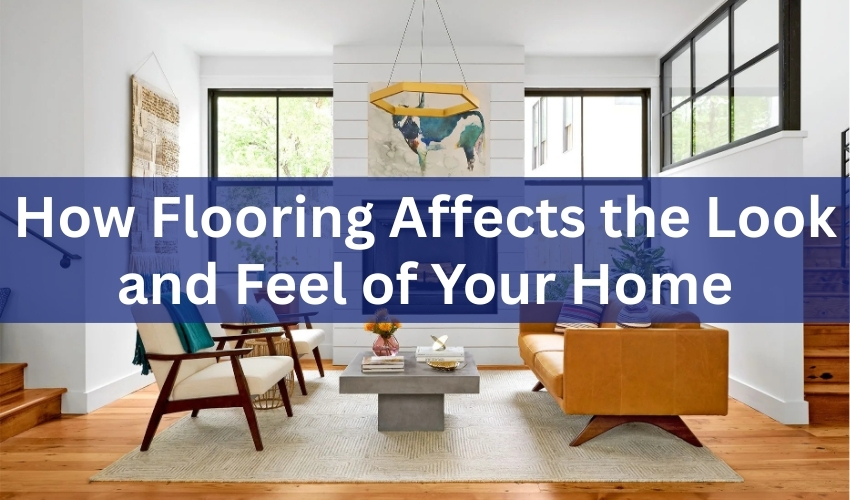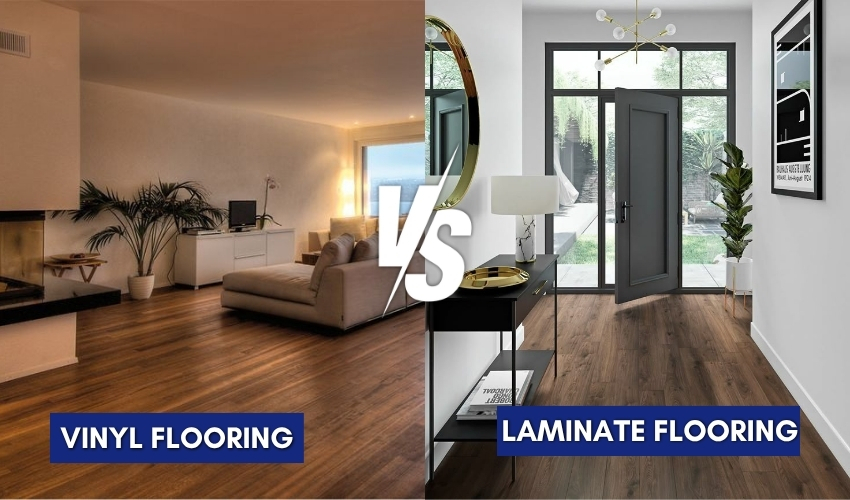Flooring is one of the first things you notice in a room. It not only adds style but also makes the space more comfortable and practical. Additionally, flooring only works best when you choose it according to the space requirements. Each room in the home has a distinct aesthetic and functionality, so it requires a different type of floor treatment.
Many people wonder how to choose the best flooring for each room in their home. If you are also one of them, then this blog post by Floor Way is for you. Here we will explain which floor works best in each room of your living space.
Best Flooring Choices for Every Room in Your Home
After thorough research and consultation with numerous interior designers, we provide details of various flooring in Dubai that look and function well in each room of your home.
1. Flooring For Living Room
The living room is the place where we spend most of our time. It is commonly used for family get-togethers, parties, and hosting guests. Here, we need flooring that is both attractive and resilient, capable of withstanding daily wear and tear. If you prefer natural materials, then wooden flooring is the best option for your living room. It adds warmth and coziness to your place with its natural texture. The wooden floors are commonly manufactured from oak, maple, walnut, and hickory.
In case you want to get the charm of wood floors, but at a fraction of the cost, luxury vinyl planks are the best alternative. They come with a protective wear layer that makes them water and scratch-resistant. Besides all that, carpets are the best floor treatment for the living room because their soft fibers provide maximum underfoot comfort.
2. Flooring for Kitchen
The kitchen is the second widely used area of the home. Here, moisture, heat, spills, and dropped utensils are common occurrences. Ultimately, there is a need for flooring that is tough and easy to clean and maintain. One of the best floor treatments for the kitchen is porcelain or ceramic tiles. They are highly resilient and can last up to 10 years even under high use. To perfectly complement the existing theme of the kitchen, these tiles are available in countless styles and colors.
Another floor treatment for the kitchen is laminate flooring. It is water-resistant and anti-slip in nature. Besides all that, you can easily clean the spills by using the mop. The best part is customizing the prints and patterns for these floors to match your aesthetic taste. You can also install vinyl floors in the cooking areas because they can tolerate the heat well without wear and tear. Additionally, their cleaning and maintenance are effortless and time-saving.
3. Flooring For Bedroom
The bedroom is meant to be comfortable and relaxing. The flooring there should provide maximum underfoot comfort and be stylish. No floor treatment can match the level of comfort offered by carpets. They are available in plush fiber densities and foam underlay. Additionally, you can buy them in multiple colors, designs, styles, and prints so they can perfectly blend with the existing interior theme of your room.
Wooden floors, whether natural or engineered, can also be installed in a bedroom. Their beautiful patterns and color scheme make your room more inviting. Besides all that, they are hypoallergenic and last for many years to come.
4. Flooring For Bathroom
For the bathroom, invest in a 100% waterproof floor treatment. Many interior designers recommend using vinyl flooring in this area. The main reason is that these tiles are easy to install and highly resistant to mold and mildew growth. Additionally, homeowners also opt for ceramic or porcelain tiles in their bathrooms due to their ease of installation and maintenance.
You can also choose vinyl sheet flooring for bathrooms because it prevents water from seeping and protects the subfloor. For the congested bathing area, always choose light color flooring with minimal patterns.
5. Flooring For Entryways & Hallways
Entryways and hallways are among the high-traffic zones of the home. Porcelain tiles and natural stones are the best flooring options for such areas. Both of these flooring types resist moisture and dirt, and they withstand high foot traffic without degrading. Additionally, natural stone floors, such as slate or granite, can also be installed in hallways and entryways. Their natural resilience can easily withstand daily wear and tear, and the bold, dark color effectively hides dirt and scuff marks.
6. Flooring For Dining Room
The dining room is a low-traffic zone, but the flooring there must be stylish and functional. For this area, you must choose the floor that can withstand the dragging of chairs and occasional spills. We recommend installing the hardwood floors there, because they are durable and resistant to scratches. If you’re looking for cost-effective options, laminate and LVP floors are the best choices. They are durable, scratch-resistant, and anti-slip in nature. To protect the flooring of your dining room from scuffs and scratches, you must use felt pads under the chair and dining table.
7. Flooring For Basements
Choose the flooring for the basement that can easily withstand moisture and temperature fluctuations. Additionally, the selected floor must be easy to clean and durable. If there is a concrete floor in the basement, then you can apply a thin layer of resin over it. This way, the floor will not absorb the stains and will be easy to clean.
Luxury vinyl planks are a cost-effective and practical option for a basement. They feel a bit softer than the hard tiles and are available in multiple prints. If the moisture level in your basement is low, you can also consider engineered wooden floors. They come with many protective coatings that prevent them from swelling and warping.
8. Flooring For Home Office
The trend for working from home is very common, so most homeowners dedicate a room as an office. Here, you need the floors that absorb noise and offer underfoot comfort for more focused work. You can install carpet, whether wall-to-wall or tile, in your home-based office. The high-pile and thick underlay for the carpets absorbs the noise. In addition to this, you can also choose laminate, LVT, or cork floors for your home office.
Top Factors to Consider for Room-Wise Flooring
Before choosing floors for the rooms, consider the factors listed below:
-
- Foot Traffic: Always consider the foot traffic of the room when selecting flooring. For the high-traffic zones, you must pick the durable options, and for the low-traffic room, you can go with luxury floors.
- Moisture Level: Never forget to check the room’s moisture level before selecting a floor treatment. For the high-moisture areas, pick the waterproof option that is resistant to mold and mildew growth.
- Aesthetics and Style: Consider the room’s aesthetics and style when selecting flooring. Pick the color, design, and pattern for the floors that perfectly blend with the existing room’s aesthetics.
- Maintenance: The wise move is to choose a low-maintenance floor for every room of your home, as it saves you a significant amount of time and effort.
- Budget: You must specify a budget for the flooring before making a purchase. This approach will protect you from overspending.
Final Words
We hope that from the above discussion, you are now aware of which flooring is best for each room of your home. You must select a floor treatment that enhances both the beauty and practicality of the room. Most importantly, always choose the best flooring contractor that offers warranties for both their products and services.










